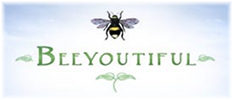Great Barrier Reef: Fun Facts
October 30, 2013 in Australia, Oceania, Travelogue

By the time you are reading this we’ll be hovering in the liquid blue over the Great Barrier Reef.
This is a bucket list item for us.
We’ve planned it for years, dreamt about it while diving with sea lions in Mexico when our babies were too young to even take their water-wings off. We’ve salivated over my Dad’s tales of when they flew around the world to board Lorcha with my brother… he got here the hard way, under his own sail. We’ve watched documentaries and science shows. We studied marine biology as a family.
Just today I was speaking with Oana, a Romanian lady who (inexplicably) has made me the central figure for her research for a master’s thesis. She asked me, “What do you dream of doing? Where do you dream of going?” I answered, “Antarctica’s science stations,” because that seems like a really big, really epic sort of dream that’s still off in the nebulous future, but then I realized, that until now, I would have said, “SCUBA the Great Barrier Reef with my kids.”
It’s not every day that a big dream comes true.
Today was spent packing, tracking down seasickness tablets, running little errands and trying hard not to let Ezra’s effervescent enthusiasm drive me completely off the rails. To say that everyone is excited would be the understatement of the century. Well, of the year, at least!
FYI: Diving the Great Barrier Reef is not cheap.
This is, very likely, a one-off for our family, so we’re doing our best to do it right. A live-aboard, three day, two night, multiple reef, day and nighttime dives, 11 planned dives. It seemed a bit silly to come all this way and pay all that money and then cheap out on the educational aspect, so this evening we trotted the tribe off for a two hour lecture at Reef Teach.
Expecting Ezra to sit through a two hour lecture by a marine biologist on the finer points of coral formation, fish body shape differences, the ecology and history of the reef, among other things, is a bit of a crap shoot, especially at bedtime.
- I didn’t have to give him the mom-death look even once.
- He sat and watched the Power Point slides with rapt attention.
- He laughed at Ruth’s lame marine biologist jokes.
- He sipped his tea and chatted up the couple from California sitting next to him.
- He took notes, willingly, without acting like someone was pulling his fingernails out.
- He raised his hand and asked questions, LOTS of them. They weren’t asinine ones either!
As we were leaving he said, “That was great Mom, she was a really good teacher, she made me laugh and I learned lots of new things and the time went really fast.”
If that is not a testimonial for Reef Teach, I don’t know what is.
So what did we learn?
Here are a few fun facts about the Great Barrier Reef:
- It is approximately the size of Florida and 2,300 km long
- GBR is the only living thing that can be seen from the moon.
- It is composed of approximately 2,900 individual reefs
- Coral does not grow below 30 m deep (it needs the light)
- Glass bottom boats were invented here, in the 1930’s
- Coral polyps (the critters that are living) are most closely related to jelly fish
- Coral polyps sting plankton and eat it.
- They also sting algae and incorporate it into themselves, this is what gives coral it’s color.
- One colony of coral will incorporate only one type of algae.
- GBR has 360 species of hard coral and 100 species of soft.
- Brain coral has life rings inside, like a tree.
- Hard coral feeds almost exclusively at night.
- Soft coral can feed any time, up to 24 hours a day.
- Giant clams, the big ones, can filter feed up to an olympic sized pool’s worth of sea water in a day!
- GBR has 1500 species of fish (3x what the Caribbean has!)
- It is the most bio-diverse reef on the planet
- Trigger fish and puffer fish (among others) can swim backwards!
- There are no great white sharks on the GBR, too warm & too shallow
- It takes female sea turtles 35-50 years to reach breeding age!
So how’s that for a start?
For those of you worrying about the Box Jellyfish risk (Hi Dad!) the risks are very low. They aren’t “out” yet for this year (apparently they snuggle down and chill out on riverbeds until it’s time to breed then they come out for the party!) Also there are 12-20 stings per year and 7 million people get in the water here every year. There have been no deaths in six years.
Yes, Tony DID bite the bullet and hire an underwater digital camera rig. Stay tuned for photos and video I’m sure.
Have you been diving here? Have any great stories to share? Pass the time for our radio silence by sharing them with us, if you please! We’ll be sharing ours when we get back!
P.S. Thank you Talon Windwalker for being Elisha and Ezra’s SCUBA instructor! Sending hugs and a virtual pecan pie for helping make a dream come true for us this year! <3
 RSS - Posts
RSS - Posts


























Oh my goodness, I’m jumping up and down and clapping my hands for you! We went to Heron Island, chosen for the safe snorkelling off the beach for young kids (ours were 8 & 6 at the time) and their Marine Biology Research Centre. Every penny spent was worth the experience. I literally cried tears of joy into my snorkel mask with a kid on each hand floating over a white sand mound with at least a dozen rays less than 2 meters below us. What an experience. I wish you all the most amazing experience! I can’t wait to see all of your videos and photos!
waiting for the photos . . .
Wow! I bet your 3-day trip there will be epic!
I must admit to being quite paranoid about all-things-jellyfish myself – good to know there is a season for them to NOT be in the water!
I remember the time one of the tour boats accidentally left someone out on the reef… oops! Well it’s too late now… Hope you’re having a magnificent time!!